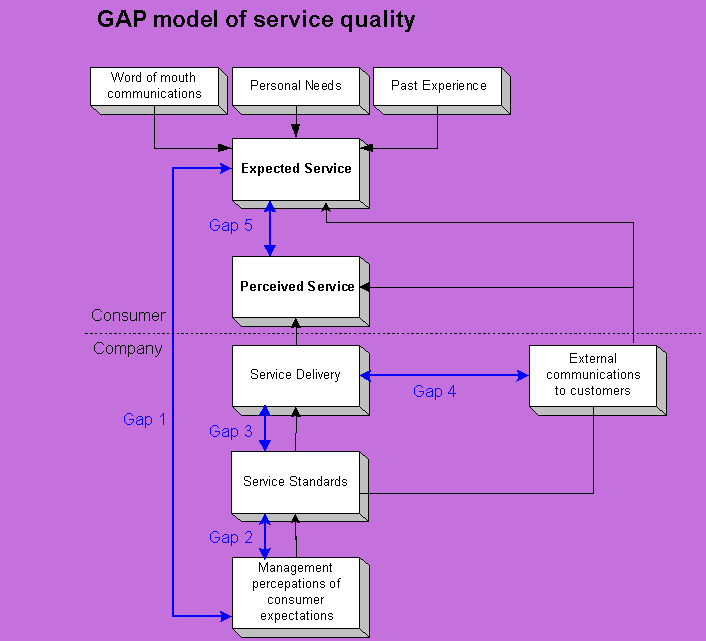The figure below shows the "GAP" model of service quality from Parasuraman et al. (Zithaml & Bitner 1996). This model offers an integrated view of the consumer-company relationship. It is based on substantial research amongst a number of service providers. In common with the Grönroos model it shows the perception gap (Gap 5) and outlines contributory factors. In this case expected service is a function of word of mouth communication, personal need and past experience, and perceived service is a product of service delivery and external communications to consumers.

However the GAP model goes further in its analysis of these key contributory factors. It not only provides a more rigorous description of the contributory Gaps, it lists key drivers for each gap and generic breakdown of each of these drivers. These are illustrated below in summary form below.
| Gap 1 |
|
| Gap 2 |
|
| Gap 3 |
|
| Gap 4 |
|
This level of detail allows powerful analysis of the contributory factors to a perception gap at a practical level. The model shows the importance of marketing, business leadership quality and HR systems in the management of the expectation gap.